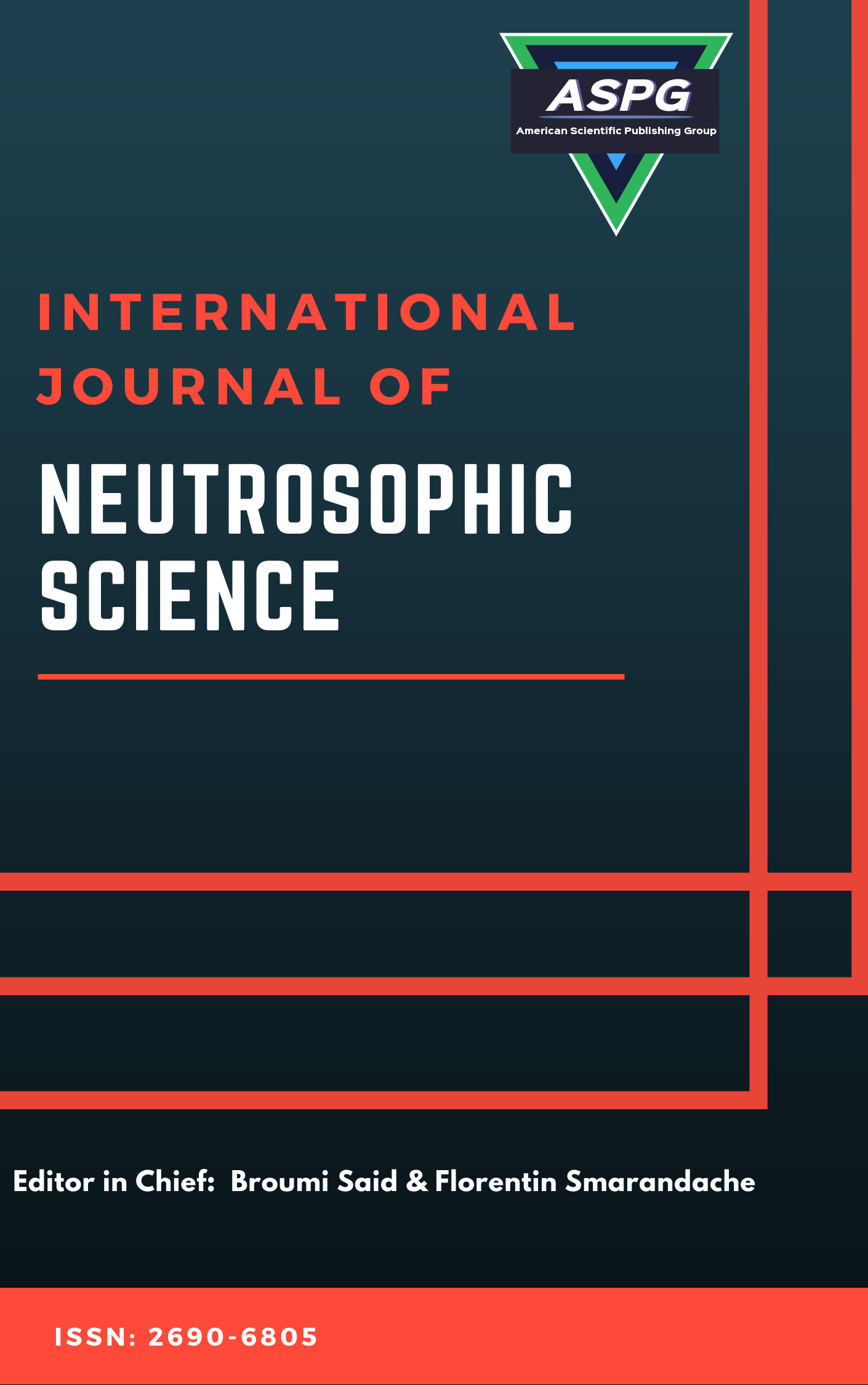

Volume 26 , Issue 4 , PP: 65-76, 2025 | Cite this article as | XML | Html | PDF | Full Length Article
Takaaki Fujita 1 , Maisam Jdid 2 * , Florentin Smarandache 3
Doi: https://doi.org/10.54216/IJNS.260408
A hyperfunction maps each input to a subset of outputs, generalizing classical functions to represent multi-valued or uncertain outcomes. A superhyperfunction extends this idea further by mapping sets (or sets of sets) to higher-order powerset values, thereby capturing complex hierarchical or layered uncertainties. In this paper, we explore the use of hyperfunctions and superhyperfunctions in linear programming. Specifically, we examine the Linear Objective (Profit/Cost) n-SuperHyperfunction and the Linear Utility n-SuperHyperfunction. We hope these concepts will advance both hyperfunction theory and the study of linear programming under uncertainty.
Hyperfunction , Superhyperfunction , Linear Programming , Linear Utility Function , Linear Objective (Profit/Cost) Function
[1] Muhammad Akram, Bijan Davvaz, and Feng Feng. Intuitionistic fuzzy soft k-algebras. Mathematics in Computer Science, 7:353–365, 2013.
[2] Mumtaz Ali, Irfan Deli, and Florentin Smarandache. The theory of neutrosophic cubic sets and their applications in pattern recognition. Journal of intelligent & fuzzy systems, 30(4):1957–1963, 2016.
[3] Krassimir T Atanassov and Krassimir T Atanassov. Intuitionistic fuzzy sets. Springer, 1999.
[4] Muhammad Azeem, Humera Rashid, Muhammad Kamran Jamil, Selma G¨utmen, and Erfan Babaee Tirkolaee. Plithogenic fuzzy graph: A study of fundamental properties and potential applications. Journal of Dynamics and Games, 2024.
[5] Temur Chilachava and Nugzar Kereselidze. Continuous linear mathematical model of preventive information warfare. Sokhumi State University Proceedings, Mathematics and Computer Sciences, 7(7):113–141, 2009.
[6] Joseph G Ecker, Michael Kupferschmid, et al. Introduction to operations research. Wiley New York, 1988.
[7] Shu-Cherng Fang and Guangzhi Li. Solving fuzzy relation equations with a linear objective function. Fuzzy Sets and systems, 103(1):107–113, 1999.
[8] Takaaki Fujita. Exploration of graph classes and concepts for superhypergraphs and n-th power mathematical structures. Advancing Uncertain Combinatorics through Graphization, Hyperization, and Uncertainization: Fuzzy, Neutrosophic, Soft, Rough, and Beyond, 3(4):512.
[9] W-L Gau and Daniel J Buehrer. Vague sets. IEEE transactions on systems, man, and cybernetics, 23(2):610–614, 1993.
[10] Jayanta Ghosh and Tapas Kumar Samanta. Hyperfuzzy sets and hyperfuzzy group. Int. J. Adv. Sci. Technol, 41:27–37, 2012.
[11] Mohammad Hamidi, Florentin Smarandache, and Mohadeseh Taghinezhad. Decision Making Based on Valued Fuzzy Superhyper-graphs. Infinite Study, 2023.
[12] Eric Jacquet-Lagr`eze, Rachid Meziani, and Roman Slowinski. Molp with an interactive assessment of a piecewise linear utility function. European Journal of Operational Research, 31(3):350–357, 1987.
[13] Maissam Jdid and Florentin Smarandache. Converting Some Zero-One Neutrosophic Nonlinear Programming Problems into Zero-One Neutrosophic Linear Programming Problems. Infinite Study, 2024.
[14] Mariano Jim´enez, Mar Arenas Parra, Amelia Bilbao-Terol, and Maria Victoria Rodr´ıguez. Linear programming with fuzzy parameters: An interactive method resolution. Eur. J. Oper. Res., 177:1599–1609, 2007.
[15] Young Bae Jun, Kul Hur, and Kyoung Ja Lee. Hyperfuzzy subalgebras of bck/bci-algebras. Annals of Fuzzy Mathematics and Informatics, 2017.
[16] Pradip Kumar Maji, Ranjit Biswas, and A Ranjan Roy. Soft set theory. Computers & mathematics with applications, 45(4-5):555–562, 2003.
[17] TM Nishad, Talal Ali Al-Hawary, and B Mohamed Harif. General fuzzy graphs. Ratio Mathematica, 47, 2023.
[18] Tong Shaocheng. Interval number and fuzzy number linear programmings. Fuzzy sets and systems, 66(3):301–306, 1994.
[19] Florentin Smarandache. SuperHyperFunction, SuperHyperStructure, Neutrosophic SuperHyperFunction and Neutrosophic Super-HyperStructure: Current understanding and future directions. Infinite Study, 2023.
[20] Vicenc¸ Torra and Yasuo Narukawa. On hesitant fuzzy sets and decision. In 2009 IEEE international conference on fuzzy systems, pages 1378–1382. IEEE, 2009.
[21] Souzana Vougioukli. Helix hyperoperation in teaching research. Science & Philosophy, 8(2):157–163, 2020.
[22] Lotfi A Zadeh. Fuzzy sets. Information and control, 8(3):338–353, 1965.
[23] Hans-J¨urgen Zimmermann. Fuzzy programming and linear programming with several objective functions. Fuzzy Sets and Systems1978, 1:45–55.